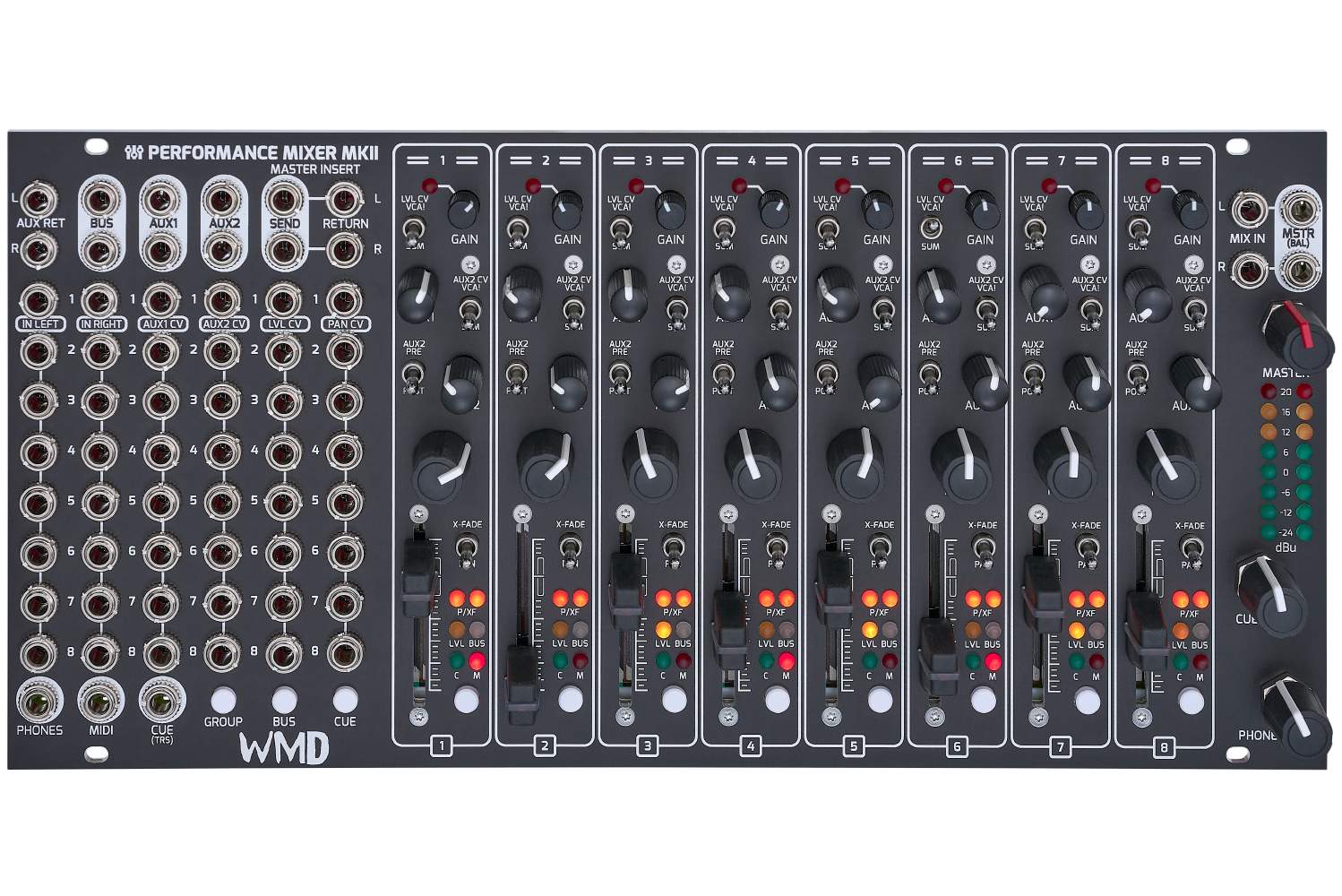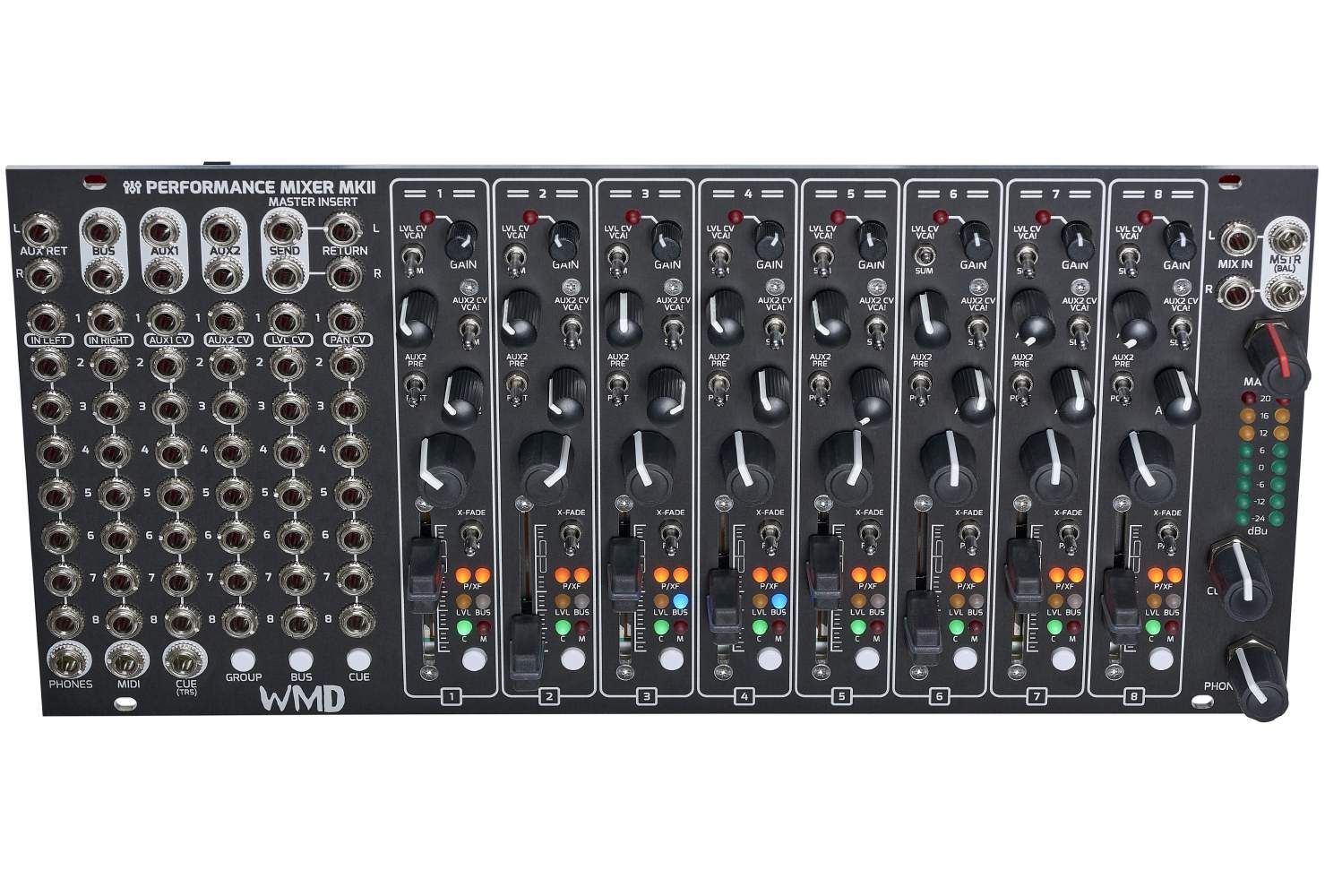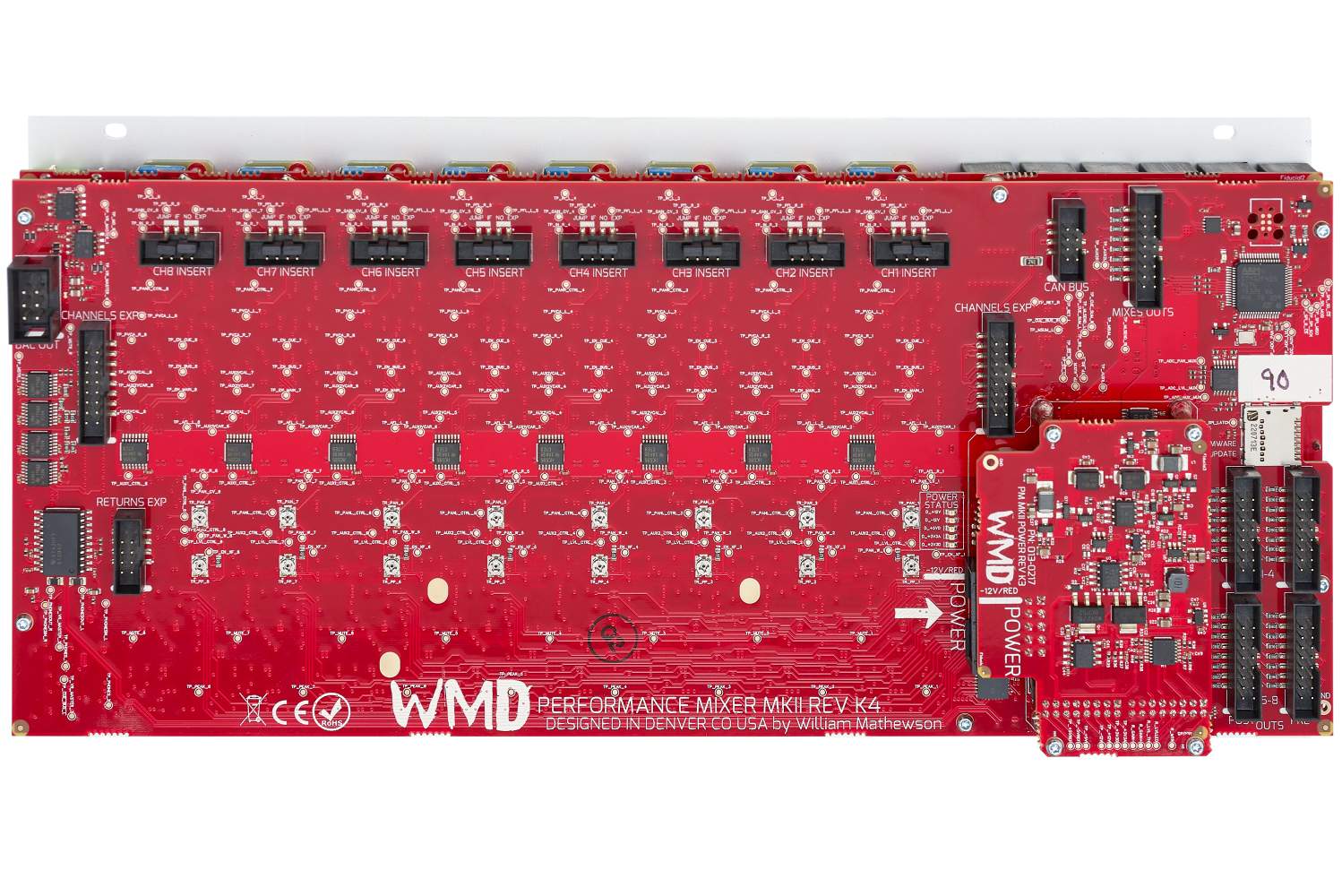News
Newsletter
WMD Performance Mixer MKII
The WMD Performance Mixer II is the direct successor to the popular Performance Mixer, one of the best ways to mix in the Eurorack format. This mixer gives the user the ability to leave their system completely patched on stage and doesn't require patching back to an external mixer.
Features:
- 8 stereo or dual mono inputs
- 2x stereo aux
- Balanced (TRS) main outputs
- Soft mute per channel
- Group button for simultaneous cue/mute/bus routing changes
- Pan/crossfade switch for dual mono inputs per channel (centre panned)
- Second bus for submixing (and/or operation)
- Stereo cue mix bus (TRS output)
- 3.5mm headphone jack with cue/mix pot
- MIDI output sends CCs for Pan, Level, Aux1, Aux2 positions - record
- your mix into your DAW
- Rear panel headers for pre and post fader/pan outputs on DB25/3.5mm sockets
- Clip indicator on input gain control
- LEVEL and AUX2 CV can be summed or used as VCAs
- AUX2 can be used as Pre Fade or Post Fade
- Channel strips are field replaceable if a pot or fader fails.
- Expandable up to 24 stereo channels
- Returns expansion adds 3x AUX return stereo inputs
- CV control over Pan, Level, Aux1 and Aux2
- CV flows to MIDI
- channel inserts: Rear cables per channel allow for future insertable effects
- Firmware update via memory card
- Built-in soft start on power up
Improvements over version 1 are:
- Noise performance - The MKI was fine with noise, there was also a bit of bleed. Going to 8 layer boards meant it was possible to ground planes between the trace layers and spread the traces three times as far apart as they were on the MKI, reducing the bleed/crosstalk by a factor of about six.
- Noise Performance 2 - On the original, the level VCA came before the panning VCAs, which saved parts/power, but meant that the panning VCAs were always connected to the mix bus, adding a noise floor that couldn't be attenuated. Making all the channels stereo and putting the pan circuit first eliminated this problem, and now the noise add is controlled by the fader. However, this forced me to make every channel stereo, so the design became simpler by working this out.
- Panning / Crossfader - The above panning/level improvement made it possible to turn the pan control into a crossfader by simply routing the post-pan signals through a switch to the opposite channel, summed at the level control. This huge improvement allowed the A/&/B input switching scheme to still work on the PM MKII, slightly differently, but it is there in spirit.
- Modular design - The channel strips are now all stereo and identical, making assembly much easier and reducing costs. It also makes them easier to replace should a mechanical part fail or get spilled. What's more, the patchbay, power board and master section are all separate parts, so if something fails, they can be replaced quickly without having to RMA the whole unit.
- Patchbay - The MKI and Rev E MKII still had sockets that did not match the channels. This was a source of frustration for me and many users of the PM MKI. I decided to just get on with it. It didn't make sense to put the jacks above the channel, it wasted too much space on the panel... So all the jacks go to the left, which keeps the mixer free of cables and allows me to move the knobs around a bit to take up all 3U. It's cleaner, easier and more intuitive to use.
- Expandability - It's super modular now, the DB25 can connect to any two headers that spit out audio, they're all the same format across PM MKII and Channels MKII. Pre, post, mix, connect it however you like.













